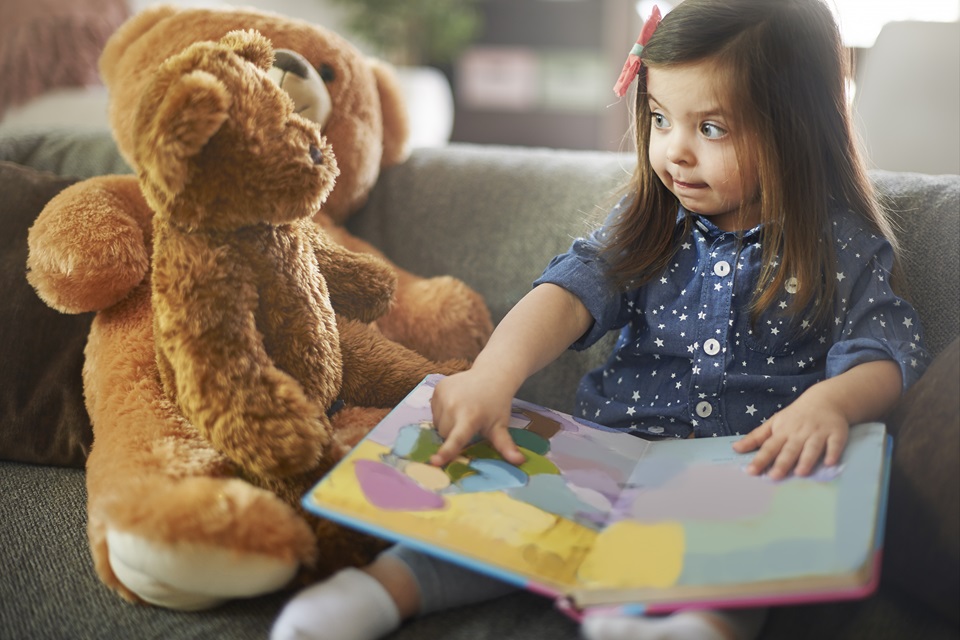Emotional intelligence is becoming increasingly recognized as a key to personal and professional success, parents are constantly on the lookout for effective ways to nurture these skills in their children from a young age. But how exactly can you teach something as complex and intangible as emotions, especially to kids? Surprisingly, the answer might lie in something as simple and accessible as books and toys. Let’s explore the multifaceted role of these tools in social-emotional learning (SEL) for kids, breaking down the mechanics behind their effectiveness and providing insights into how parents can best use them.
Table of Contents
Laying The Foundation: Understanding Emotions Through Stories
From fairy tales to modern children’s books, stories have always been a powerful medium for conveying lessons and morals. When it comes to teaching kids about emotions, books serve as an invaluable resource. Reading a story together can open up opportunities for children to identify and express their own feelings, mirroring the characters’ journeys. These narrative experiences allow kids to practice empathy by seeing the world through someone else’s eyes, understanding that everyone has their own unique set of emotions. This foundational understanding is the first step towards building emotional intelligence, setting the stage for more complex learning and interactions.
The Power Of Play: Toys As Tools For Emotional Expression
While books lay the groundwork for understanding emotions, toys bring those concepts to life through play. Playing is a child’s language, and toys are their words. Dolls, action figures, and even simple balls can become protagonists in a child’s imaginative play, helping them to act out and understand various emotional scenarios. This type of play not only reinforces the emotional lessons gleaned from books but also encourages children to express their own feelings, whether they’re joyfully sharing a toy or managing frustration when a game doesn’t go their way.
It’s within these playful contexts that children learn to navigate their emotional worlds. For instance, a teddy bear isn’t just a soft companion; it’s a confidant for fears, a partner in joy, and a comfort in moments of managing depression. This dynamic interplay between toys and emotions guides children in understanding and expressing their feelings in a healthy way.
Bridging The Gap: Emotional Regulation Through Interactive Play
As children grow, the complexity of their emotions does too. It becomes crucial for them not only to recognize and name their feelings but also to manage and regulate them. Interactive toys and games can play a significant role in this aspect of social-emotional learning. Board games, for instance, teach patience and turn-taking while also providing a safe space for children to experience and learn from disappointment or excitement in a controlled environment.
Plus, role-playing toys can offer scenarios for children to practice conflict resolution and empathy, laying a practical foundation for these skills before they’re put to the test in real-world interactions. Through this guided play, children learn that while they can’t always control what they feel, they can manage how they respond to those feelings, an invaluable lesson in emotional regulation and resilience.
The Perfect Pair: Choosing The Right Book & Stuffed Animal Combo
Choosing the right resources to support your child’s emotional learning journey can be both fun and impactful. Pairing books with related toys, especially stuffed animals, can create a powerful tool for emotional growth. This approach combines the narrative depth of reading with the tangible comfort of a toy, offering children a multi-sensory learning experience. Imagine reading a story about overcoming fear with a cuddly companion by your child’s side, embodying the courage and support found in the tale.
Such combinations can significantly enhance a child’s empathy and understanding of emotions. For instance, pairing a book about friendship and understanding with a fox lovey can help a child remember and internalize the story’s lessons. The fox becomes more than just a toy; it’s a reminder of the story’s moral, a symbol of friendship, and a source of comfort in times of need. This method not only reinforces the emotional lessons at the heart of the story but also provides a physical source of comfort that children can turn to in times of distress.
Expanding Horizons: Diversity & Representation In Emotional Learning
Incorporating books and toys that showcase a wide range of cultures, experiences, and perspectives is crucial in fostering a well-rounded emotional intelligence in children. Exposure to diverse stories and characters can help children understand and appreciate the wide array of emotions and experiences that people can have, encouraging empathy and inclusivity from a young age.
This diversity in emotional learning resources also ensures that all children can see themselves reflected in the stories they read and the toys they play with, validating their feelings and experiences. When children recognize their own emotions and situations in the books they read or the toys they play with, it not only reinforces their understanding of themselves but also of others who may be different from them.



